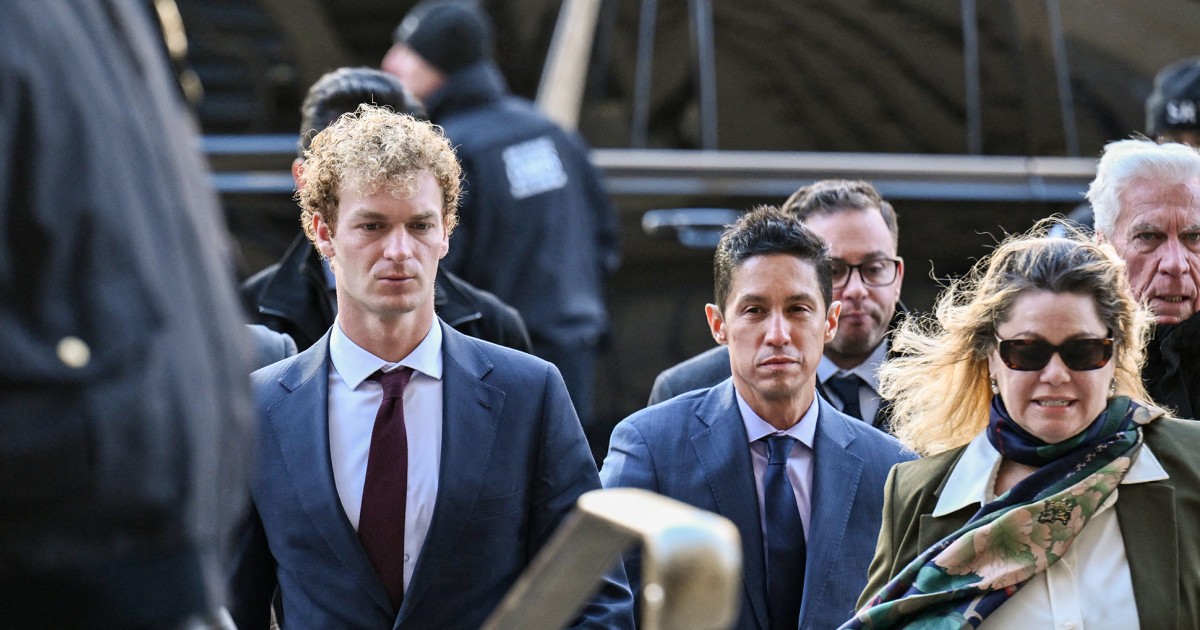The ongoing trial of Daniel Penny, charged with manslaughter in the death of Jordan Neely, has taken a dramatic turn as the jury has declared itself deadlocked. This development raises significant questions about the future of the case, legal strategies moving forward, and the broader societal implications of the incident. With no clear resolution in sight, the question remains: What happens next?
Background: The Case at a Glance
Daniel Penny, a former U.S. Marine, faces manslaughter charges after the death of 30-year-old Jordan Neely on a New York City subway train in May 2023. Neely, a homeless man, had been acting erratically when Penny, along with several bystanders, restrained him in a chokehold for several minutes. Neely later died from the effects of the restraint. Penny has claimed he acted in self-defense, fearing for his life and the safety of other passengers.
The case has sparked national debate, drawing attention to issues surrounding homelessness, mental illness, and the appropriate use of force. Penny’s supporters argue that he was merely trying to protect himself and others, while critics contend that his actions were excessive and resulted in Neely’s unnecessary death. The trial, which has attracted significant media coverage, is not only a legal battle but a reflection of broader societal tensions.
What Does a Deadlocked Jury Mean?
A hung or deadlocked jury occurs when the jury is unable to reach a unanimous verdict, which is required for most criminal cases in the United States. In Penny’s case, the jury has failed to come to an agreement on the manslaughter charge, leaving the future of the trial uncertain.
Legal Implications
When a jury becomes deadlocked, the judge typically has two options: declare a mistrial or send the jury back to deliberate further. In this case, the judge has opted for the latter, urging the jury to continue deliberations in the hope of reaching a consensus. However, if the jury remains deadlocked after further deliberation, a mistrial may be declared, and the prosecution could choose to retry the case with a new jury.
- Mistrial: A mistrial could occur if the jury cannot reach a unanimous verdict. This would result in a reset of the trial process, potentially leading to a new trial.
- Retrial: A retrial would involve presenting the case before a new jury. The prosecution could also adjust its strategy in light of any insights gained from the initial trial.
- Dismissal: In rare cases, a mistrial could lead to a dismissal, although this is unlikely in a case with such high public interest.
The Role of Jury Deliberation in High-Profile Cases
In high-profile trials like Penny’s, jury deliberation is often influenced by public opinion, media coverage, and societal pressure. Jurors may be aware of the intense public interest and may feel the weight of their decision, knowing that their verdict could have far-reaching implications beyond the courtroom.
The presence of polarized opinions surrounding Penny’s actions could make it even more difficult for jurors to reach a consensus. While some jurors may view Penny’s actions as a necessary response to a perceived threat, others may interpret his conduct as excessive and disproportionate to the situation. The deadlock may be a reflection of this fundamental divide.
Factors Contributing to the Deadlock
Several factors could be contributing to the deadlock in this case, each of which plays a role in the complexity of the trial.
1. Complex Legal Definitions
Manslaughter laws vary by state, but generally, a defendant is guilty of manslaughter if they cause the death of another person without lawful justification, but without the intent to kill. In Penny’s case, the defense has argued that his actions were a form of self-defense, a legal justification for using force. However, the prosecution maintains that his use of force was excessive, particularly given the circumstances.
The legal intricacies of defining what constitutes reasonable self-defense versus excessive force can lead to differing interpretations. Jurors must decide whether Penny’s actions were proportionate to the threat he perceived, which requires a nuanced understanding of the law and the specific circumstances of the case.
2. Emotional and Social Influences
The case has resonated deeply with the public due to its intersection with issues of race, class, and mental health. Jordan Neely was a Black man who had struggled with homelessness and mental illness, while Daniel Penny is a white
See more CNET 247



